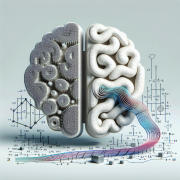Constrained Optimization in AI & Cloud Solutions for Technological Innovation
Unlocking Efficiency in AI and Cloud Solutions through Optimization Techniques
Throughout my career, both in the transformative space of Artificial Intelligence (AI) and Cloud Solutions at DBGM Consulting, Inc., and as a passionate advocate for leveraging technology to solve complex problems, I’ve consistently observed the pivotal role optimization plays across various domains. Having navigated the realms of process automation, machine learning models, and cloud migration strategies, my academic and professional journey, including a profound period at Microsoft and my recent academic accomplishment at Harvard University focusing on information systems and AI, has ingrained in me a deep appreciation for optimization.
Here, I delve into a specific optimization concept—Constrained Optimization—and its mathematical foundations, illustrating its applicability in enhancing AI-driven solutions and cloud deployments. Constrained Optimization is a cornerstone in developing efficient, robust systems that underpin the technological advancements my firm champions.
Constrained Optimization: A Mathematical Overview
Constrained optimization is fundamental in finding a solution to a problem that satisfies certain restrictions or limits. Mathematically, it can be described by the formula:
Minimize: f(x)
Subject to: g(x) ≤ b
where f(x) is the objective function we aim to minimize (or maximize), and g(x) ≤ b represents the constraints within which the solution must reside.
A cornerstone method for tackling such problems is the Lagrange Multipliers technique. This approach introduces an auxiliary variable, the Lagrange multiplier (λ), which is used to incorporate each constraint into the objective function, leading to:
L(x, λ) = f(x) + λ(g(x) - b)
By finding the points where the gradient of the objective function is parallel to the gradient of the constraint function, Lagrange Multipliers help identify potential minima or maxima within the constraints’ bounds.
Applications in AI and Cloud Solutions
In AI, particularly in machine learning model development, constrained optimization plays a critical role in parameter tuning. For instance, when working with Support Vector Machines (SVMs), one seeks to maximize the margin between different data classes while minimizing classification errors—a classic case of constrained optimization.
In the realm of cloud solutions, especially in cloud migration strategies and multi-cloud deployments, resource allocation problems often present themselves as constrained optimization tasks. Here, one needs to minimize costs or maximize performance given constraints like bandwidth, storage capacity, and computational power.
Case Study: Optimizing Cloud Deployments
During my tenure at Microsoft, I was involved in a project that showcased the power of constrained optimization in cloud migrations. We were tasked with developing a migration strategy for a client, aiming to minimize downtime and cost while ensuring seamless service continuity. By applying constrained optimization models, we were able to efficiently allocate resources across the multi-cloud environment, adhering to the project’s strict boundaries.
Conclusion
Constrained optimization serves as a mathematical foundation for solving a plethora of real-world problems. Its significance cannot be overstated, especially in fields that demand precision, efficiency, and adherence to specific criteria, such as AI and cloud computing. My experiences, both academic and professional, underscore the transformative impact of optimization. It is, without doubt, a powerful tool in the arsenal of technologists and business leaders alike, facilitating the delivery of innovative, robust solutions.
As technology continues to evolve, the principles of optimization will remain central to overcoming the challenges of tomorrow. In my ongoing journey with DBGM Consulting, Inc., I remain committed to leveraging these principles to drive success in our projects, ensuring that we remain at the forefront of technological innovation and thought leadership.









Leave a Reply
Want to join the discussion?Feel free to contribute!